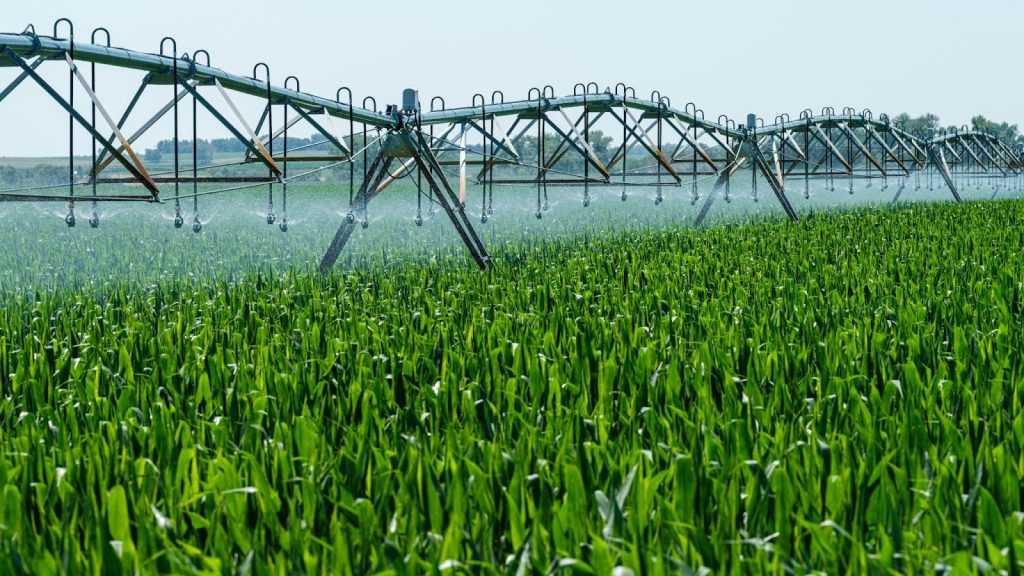Worksheet for Lesson 7:
Climate Change and Traditional/ Industrial Agriculture
Learning Objectives:
2. Students learn about the impact of traditional and large-scale/industrial agricultural practices on climate change.
Introduction
UN, n.d.

Agriculture ecosystem
Crop and livestock production, fish farming, fisheries, and forestry for both food and non-food products are all included in the agriculture ecosystem. Climate change hurts the agricultural ecosystem, contributing significantly to pests and blights, population shifts, and changes in biodiversity. Biological changes such as altered flowering and harvesting seasons, quality changes, and shifting of cultivable areas reveal the effects of climate change on the agricultural and livestock sectors.
No industry is more climate sensitive. Climate change harms agricultural and food production in developing countries, particularly in those that are already climate- vulnerable (extremely dry, floods, and cyclones), have low incomes, and have an increased rate of hunger and poverty.
Traditional Vs Industrial Agriculture
Traditional agriculture can be defined as a primitive style of food production and farming that involves the intensive use of indigenous knowledge, land use, traditional tools, natural resources, organic fertilizer, and the cultural beliefs of the farmers. Traditional agriculture is characterized by very low use of technology, making its large- scale production ineffective. Production is usually, solely for the consumption of the farmer and those who cultivate the land. Traditional agriculture is a very basic activity on which most of the physical capacity of the farmer and his workers depends on its production. In this case, this type of agriculture is not so focused on trade. The farms are quite biodiverse and have plants that enrich the soil with nutrients. In this type of agriculture, many other organisms perform a variety of ecological and beneficial functions for production. It can be said that the strategies of traditional agriculture are based on ecology and nature.
After World War II, agriculture started to become more industrialized to reduce world hunger and improve the efficiency and security of the food supply. In the past 60 years, there have been significant costs associated with the global shift toward this type of farming. Industrialized agriculture uses chemical inputs like fertilizers, pesticides, and non-therapeutic antibiotics and is heavily mechanized and concentrated.
Industrial agriculture originated in the 1960s when petrochemical companies introduced innovative techniques for intensive chemical farming. As a result of the agrochemical industry convincing farmers that they could increase their profits by planting large fields with a single highly profitable crop and by controlling weeds and pests with chemicals, chemical fertilizers and pesticides have drastically transformed agriculture and farming. The risk of large tracts of land being destroyed by a single pest was high with this single-crop monoculture practice. It also hurt farm workers’ and residents’ health. Overuse of chemicals in agriculture has had disastrous long-term effects on soil health, human health, social relationships, and the environment.
Sustainable agriculture, on the other hand, is a production system, which employs practices that safeguard the environment, public health, human communities, and animal welfare. It relies on ecological processes, biodiversity, and cycles that are adapted to local conditions. Organic farming combines science, innovation, and tradition to benefit the environment as a whole and improve everyone’s quality of life. It relies on ecosystem services and generally has fewer negative effects on the surrounding landscape than conventional agriculture. Sustainable agriculture takes a more holistic approach to farming than conventional agriculture.
Food production through sustainable agriculture is a natural process that has several advantages for the environment, economy, and society.
How can we reduce climate change?
How can we reduce climate change?
Traditional agriculture is characterised by very low use of technology, making its large- scale production unproductive. It can be said that the strategies of traditional agriculture are based on ecology and nature as well as polycultures that provide different types of food for their consumption. In this case, this type of agriculture is not so focused on trade. The production here is solely for the consumption of the farmer and those who cultivate the land. Traditional agriculture is a very basic activity on which most of the physical capacity of the farmer and his workers depends for its production.
Roughly 30% of greenhouse gas emissions come from the agriculture food value chain. There are so many essential elements to this value chain, it is complicated, and it is different in various parts of the world, but it all must work as a system, to deliver the food needed all over the world, to a growing population. But, at the same time, do it in a way that not only protects our planet but makes the planet better. It must be farmers, working together with industry, food companies, retailers, government regulators, and NGOs, coming together with different ideas on how we solve this.
Impact of large-scale/industrial agricultural practices on climate change
The intense promotion of large-scale monoculture plantations and agrofuels as solutions to the present food and energy emergencies increase the tension on agricultural land, leading to further deforestation and more greenhouse gas emissions. In developing countries, in spite of the growth of industrial agriculture, there are still masses of small-scale farmers who can apply agroecological practices with potentially substantial impacts on greenhouse gas mitigation. In developed countries, the changes in agricultural policies will be essential to reverse the land consolidation curve. Such issues include the escalating demands for organic and local goods, an increase in farmer market expansion and a rising popularity of community-supported agriculture programmes.

Industrial farming encourages practices that degrade the soil and increase emissions while leaving farmers more vulnerable to damage as the planet warms.
Gustin, G. (2019)
The ageing of a generation of farmers is also accelerating consolidation. The average farmer is approaching 60 years old, and many farmers are relying on the land to finance retirement. But they’re not selling it to young farmers, who can’t afford the high land prices. They’re selling it to larger farms or leasing it out.
REFERENCES
https://www.eea.europa.eu/signals/signals-2015/articles/agriculture-and-climate-change
https://wfto.com/news/food-farming-and-climate-change-it%E2%80%99s-bigger-everything-else
https://climateatlas.ca/agriculture-and-climate-change
Dr Chang‐Gil K. (2008) The Impact of Climate Change on the Agricultural Sector: Implications of the Agro‐Industry for Low Carbon, Green Growth Strategy and Roadmap for the East Asian Region.
Dr. Chang‐Gil, K. (2008). The Impact of Climate Change on the Agricultural Sector: Implications of the Agro‐Industry for Low Carbon, Green Growth Strategy and Roadmap for the East Asian Region.
https://repository.unescap.org/bitstream/handle/20.500.12870/4032/ESCAP-2012-PB- Impact-climate-change-agricultural-sector-agro-industry.pdf?sequence=1&isAllowed=y
Nelson, G., Rosegrant, M., Koo, J., Robertson, R., Sulser, T., Zhu, T., Ringler, C., Msangi, S., Palazzo, A., Batka, M., Magalhães, M., Santos, R. A., Ewing, M., Lee, D. (2009). Climate Change: Impact on Agriculture and Costs of Adaptation.
https://ebrary.ifpri.org/utils/getfile/collection/p15738coll2/id/130648/filename/130821.pdf
United Nations (n.d.). Climate change
https://climatepromise.undp.org/news-and-stories/climate-dictionary-everyday-guide-climate-change
European Environment Agency (2015) Agriculture and climate change
https://tinyurl.com/j2w8phxc
Portillo, G. (n.d.) Agricultura tradicional
https://www.jardineriaon.com/pl/agricultura- tradicional.html
Syngenta Group (2018), Environmental impacts of agriculture
https://youtu.be/gQheu5CW_Ls
Gustin, G. (2019). Industrial Agriculture, an Extraction Industry Like Fossil Fuels, a Growing Driver of Climate Change
https://insideclimatenews.org/news/25012019/climate-change-agriculture-farming- consolidation-corn-soybeans-meat-crop-subsidies/
Lin, B., Chappell, M. J., Vandermeer, J., Smith, G., Quintero, E., Kerr, R., Griffith, D., Ketcham, S. Latta, S., Mcmichael, P., Mcguire, K., Nigh, R., Rocheleau, D., Soluri, J., Perfecto, I. (2011). Effects of industrial agriculture on climate change and the mitigation potential of small-scale agro-ecological farms,
https://www.researchgate.net/publication/230877696_Effects_of_industrial_agricultur e_on_climate_change_and_the_mitigation_potential_of_small-scale_agro- ecological_farms
It's Quiz Time!
It’s quiz time!
Here’s a fun quiz that you could use to test your understanding of the key concepts covered in this lesson:
Quiz Summary
0 of 4 Questions completed
Questions:
Information
You have already completed the quiz before. Hence you can not start it again.
Quiz is loading…
You must sign in or sign up to start the quiz.
You must first complete the following:
Results
Results
0 of 4 Questions answered correctly
Your time:
Time has elapsed
You have reached 0 of 0 point(s), (0)
Earned Point(s): 0 of 0, (0)
0 Essay(s) Pending (Possible Point(s): 0)
Categories
- Not categorized 0%
- 1
- 2
- 3
- 4
- Current
- Review
- Answered
- Correct
- Incorrect
-
Question 1 of 4
1. Question
Traditional agriculture is characterised by:
CorrectIncorrect -
Question 2 of 4
2. Question
Traditional agriculture is characterised by very low use of:
CorrectIncorrect -
Question 3 of 4
3. Question
Agriculture is accountable for nearly a quarter of the ongoing growth of greenhouse gas emissions:
CorrectIncorrect -
Question 4 of 4
4. Question
The ageing generation of farmers:
CorrectIncorrect





